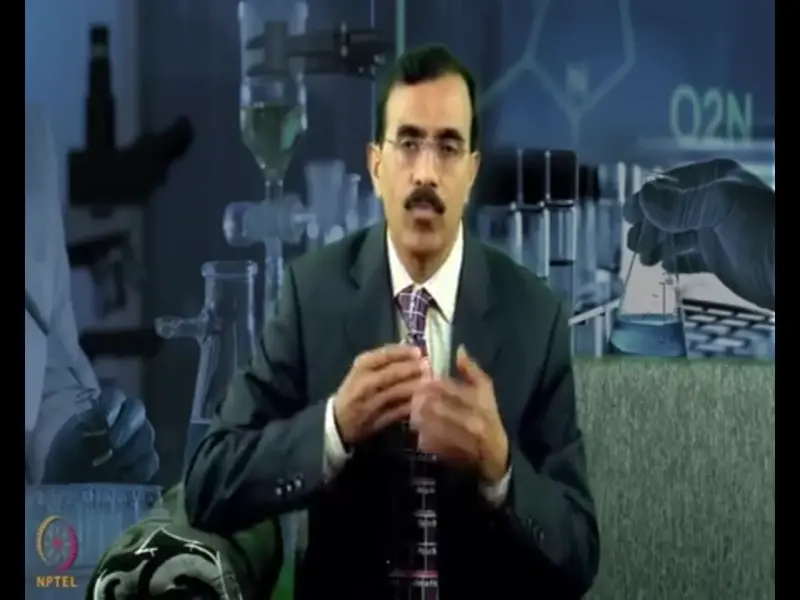

Chemistry of Group Elements
Video Lectures For Class 11
(NEET Chemistry)
Available courses 29
Group 1 and group 2 Elements of periodic table
The key difference between group 1 and group 2 components is that everyone group 1 components have unpaired electrons in their outermost orbital, whereas group 2 components have paired electrons in their outermost orbital.
S block components are found in groups 1 and 2 of the periodic table. That means; these parts have their outermost electrons within the s orbital. The groups one and two differ from each other looking at the amount of electrons in their outermost orbital. One s orbital will contain only 2 electrons as a result of the magnetic quantum number of this orbital is 0.
The elements in group one are called the alkali metals; those in group 2 are the alkaline earth metals; those in fifteen are the pnictogens; those in sixteen are the chalcogens; those in seventeen are the halogens; and those in eighteen are the noble gases.
What are the characteristics of group 1 Elements of periodic table
Group one elements are chemical elements having one electron in the outer s-orbital. it’s the first column of the s block of the tabular array. It contains hydrogen and alkali metals. The members of this group 1 are as follows:
Hydrogen (H)
Lithium (Li)
Sodium (Na)
Potassium (K)
Rubidium (Rb)
Caesium (Cs)
Francium (Fr)
Although hydrogen belongs to this group due to its electron structure, it differs from alkali metals in several ways.. As an example, hydrogen exists as a gas, while other elements during this group are metals. These metals are all shiny, extremely reactive, and really soft (we will simply cut them employing a simple knife).
Generally, the group 1 elements show low densities, low melting points, low boiling points and have body-centred boxlike crystal structures. Moreover, they need distinct flame colours, so we are able to simply distinguish them by exposing a sample to a gas burner. There are periodic differences as you progress through the alkali metals group, as shown below.
The atomic size will increase
- - The melting point {freezing point|temperature} and boiling point decrease due to the flexibility to create sturdy bonds is diminished down the group (when the atom gets large, the formed bond is weak).
- - TThe density will increase.
- - TFirst ionisation energy decreases as a result of massive atoms, the outermost electron is loosely bound and it will simply be removed.
- - TElectronegativity decreases
- - TReactivity decreases.
- - TAlkali metals have low electron affinities than other parts
What are the characteristics of Group 2 Elements of Periodic table
Group 2 elements are chemical elements having their outermost electron pair in an s orbital. Therefore, their valence electrons are in the form of ns2. Further, this group is the second column of the s block. We name them as alkaline-earth metal metals. The members of this cluster area unit as follows:
Beryllium (Be)
Magnesium (Mg)
Calcium (Ca)
Strontium (Sr)
Barium (Ba)
Radium (Ra)
What’s the difference? Elements of the periodic table in groups 1 and 2
The group 1 and a pair of dissents from one another depending on the amount of electrons in their outer orbital. The key distinction between group 1 and group 2 elements is that all group one elements have unmatched electrons in their outermost orbital, whereas group 2 elements have paired electrons in their outer orbital.
The below infographic shows a lot of comparisons relating to the distinction between group 1 and group 2 elements.
Group 1 vs group 2 elements
|
Group 1 elements |
Group 2 elements |
|
|
Definition |
Group 1 elements are chemical elements having an unpaired electron in outermost s orbital |
Group 2 elements are chemical elements having their outermost element pair in s optional |
|
Valence electrons |
One |
Two |
|
Members |
Lithium ,sodium ,potassium ,rubidium, Cesium and francium ,along with hydrogen |
Beryllium ,magnesium, calcium, strontium,barium, and radium |
|
Other names |
Alkali metal along with hydrogen |
Alkaline earth metal |
|
Reactivity |
High reactive |
Less reactive compared to group 1 |
|
Melting and boiling point |
Comparatively low |
Very high |
|
Nature |
Soft metal |
Hard metal |
|
Cations |
Form cation by removing one valence electrons |
form cation by removing two electrons s |
Features of the modern periodic table.
The periodic table groups elements together based on their chemical and physical properties. There are rows and columns in the table.In the periodic table, the vertical columns indicate groups. The horizontal rows in the table represent Periods.The elements are arranged based on their increasing atomic number.
There are seven periods and eighteen groups within the table.
The inert gases i.e. He, Ne, Ar, etc. …
All the groups are divided into sub groups A and B except zero and VIII group within the modern tabular array.The three broad classes of parts are metals, nonmetals, and metalloids. Most parts are metals. Nonmetals are placed on the right hand side of the tabular array. Metalloids have properties of both metals and nonmetals.Modern tabular array is based on modern periodic law and parts are arranged in increasing order of their atomic numbers. A modern tabular array has 18 vertical columns known as groups. parts in any group of the periodic table have similar physical and chemical properties. There are 7 horizontal rows known as periods.
Conclusion
The vertical columns on the periodic table are known as groups or families because of their similar chemical behaviour. All the members of a family of elements have a similar number of valence electrons and similar chemical properties
The group one and 2 differ from one another looking at the number of electrons in their outermost orbital. The key distinction between group one and group 2 parts is that all group 1 parts have mismatched electrons in their outermost orbital, whereas group 2 parts have paired electrons in their outermost orbital.
What are Main Group Elements?
The elements in the main group are by far the most abundant elements – not only on Earth but throughout the universe. As a result, they are sometimes referred to as representative elements. The main group elements are found in the s- and p- blocks, which means that their electron configurations will end in s or p. Group 1 contains elements with one valence electron, group 2 contains elements with two, group 13 contains elements with three valence electrons, and so on until group 18, which contains elements with eight valence electrons.
Since the main group elements include both metals and nonmetals, their physical properties will differ greatly. For example, elements on the left (in groups 1, 2, and 13) will be solid, very metallic, and tend to lose electrons, whereas many elements on the right will be non-metallic gases that tend to gain electrons.
Overview of the Main Group Elements
- - The main group elements in older IUPAC group numbering systems are groups IA, IIA, and IIIA to VIIIA. When the periodic table is divided in this way, the transition metals and inner transition metals are the other main element categories.
- - The s-block elements are divided into two groups: Group 1 (alkali metals) and Group 2 (alkaline earth metals).
- - Groups 13-18 are the p-block elements (basic metals, metalloids, nonmetals, halogens, and noble gases).
- - Typically, the s-block elements have one oxidation state (+1 for group 1 and +2 for group 2).
- - The p-block elements can have multiple oxidation states.
Properties of Main Group Elements
Properties of the S-Block Elements
- - The valence configuration of their general valence is ns1 – 2.
- - The oxidation state of Group 1 elements (alkali metals) is +1. The oxidation state of Group 2 elements (alkaline earth metals) is +2.
- - All s-block elements are highly reactive, except for helium.
- - The s-block metals are soft and have low melting and boiling points.
- - S-block metals have a high electropositive potential. They combine with nonmetals to form ionic compounds.
- - The metals in the s-block react to form basic oxides, hydrides, and hydroxides.
Properties of the P-Block Elements
The names of the groups are as follows:
| Name | Group |
|---|---|
| Icosagens | 13 |
| Crytsallogens | 14 |
| Pnictogens | 15 |
| Chalcogens | 16 |
| Halogens | 17 |
| Noble gases | 18 |
- Multiple oxidation states distinguish the p-block elements. However, the oxidation state and other properties are determined by the group. The oxidation state of group 17 elements (halogens) is -1, while group 18 elements (noble gases) is 0.
- The oxidation state of p-block metals is generally ns2 np1 – 6. The valence electron of their atom is in the p orbital.
- Since p- block elements include nonmetals, metalloids, and metals, their properties vary according to their group.
- Non-metals such as F, Cl, Br, and I form ionic compounds with metals in the p-block elements, while the remaining non-metals form covalent compounds.
Frequently Asked Questions on Main Group Elements
Q1
What are the main group elements in the periodic table?
In the periodic table, the main group elements belong to the s- and p-blocks.
Q2
Which elements are not a part of the main group elements?
The elements of the d-block have not been considered to be main group elements. In other words, the transition metals in the middle of the periodic table and the lanthanides and actinides below the main body of the table do not belong to the main group of elements.
Q3
What is the importance of main group elements?
The main group elements are significant for several reasons:
- The main group elements are the most abundant elements in the universe and on Earth. They account for 80% of the Earth’s crust. As a result, the main group elements are also known as representative elements.
- The main group elements and their compounds are among the most economically important elements. These elements are present in the vast majority of manufactured goods.
- These elements are required for the existence of life. Carbon, oxygen, hydrogen, nitrogen, sulphur, and phosphorus are the main elements required by biological molecules.
Q4
Are all the elements of the main group elements metals?
No, the main group elements are metals, non-metals, metalloids and noble gases.
Q5
Discuss the oxidation state of main group elements.
- The s-block elements have one oxidation state (+1 for group 1 and +2 for group 2).
- The p-block elements can have multiple oxidation states.

 9868233590
9868233590














